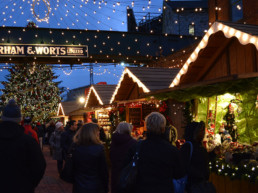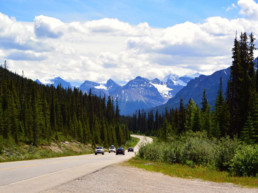It is cold, the rain is coming down almost horizontal and I am driving through the place where telephone poles go to die.
They are stacked like log cabins left and right. Towering, rotting, wooden monoliths to the telecom age.
Clunking through six inch deep pot holes I come to my final destination, a small semi circle of horse trailers and riders assembled in a long ago filled in gravel quarry. The riders dressed in bright scarlet and kaki, the posh Canadian and British accents mingling with the sounds of horses and hounds. It looks as though they have been plucked from the pages of an old British fairy tale.
I have tracked down one of the only traditional Fox Hunting clubs in all of Canada, the Eglinton-Caledon Hounds, and before I can even begin to make small talk let alone ask questions, a cheerful middle aged women thrusts a plastic cup into my hands, its thick, purplish contents sloshing from side to side.
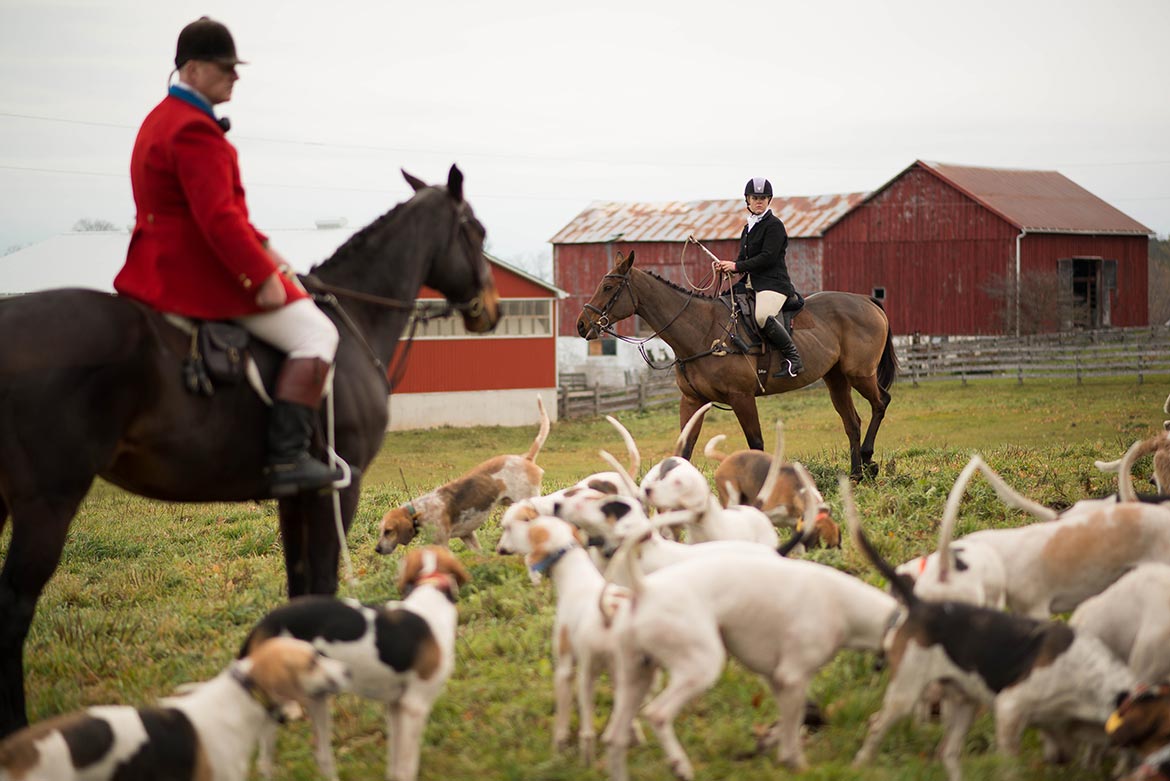
Now I am no Hunter S. Thompson but it would appear as though we are sliding into some gonzo journalism, Victorian style.
“It’s tradition” the smiling, weathered faces around me say, I take a sip of the thick, sweet Port and begin to delve into the odd and fascinating world of the ‘Old World’ Fox Hunt and the ‘New World’ equivalent that roam the hills, fields and forests of Caledon today.
Founded in 1843 as the Toronto Hunt by the regimental officers stationed in newly renamed Toronto, its gradual transition into the Eglinton-Caledon Hounds mirrors that of the growth of Toronto and the GTA and the slow retreat of open farm land and forest.
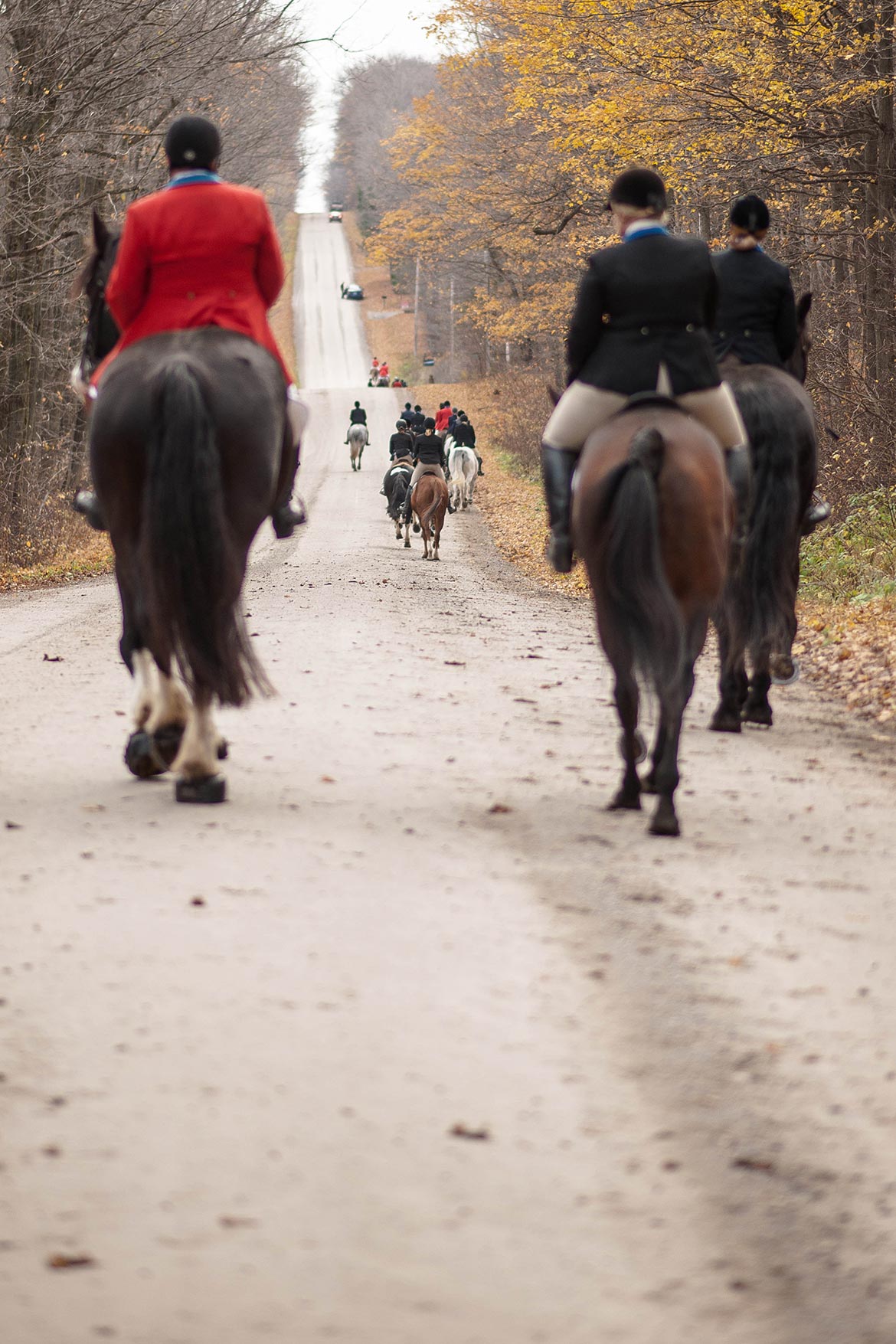
In the early years, difficulty in transportation and distance to the original hunting grounds led George W. Beardmore to create a stable and hunt facility in the mid war years north on Yonge Street near Eglinton, so as to be closer to the open fields and wild forests. As the city further encroached upon the open land the hunt required, the Eglinton Hunt moved to the hills of Caledon in 1962, combining both names into the Eglinton-Caledon Hunt.
I again find myself bundled against the cold and scattering rain. The Autumn leaves have all but fallen; yet charging across the wet soggy ground is a pack of howling, leaping, stinking hounds. They bound this way and that, pleased beyond belief to be out of the trailer and ready for the hunt. At the signal from the hunt master, the throbbing mass of fur and tails turn and become a different beast entirely. With a single blast they are off, one sliding, shifting, barking mass, down the slippery grass slope towards the road, the track of forest on the other side and the hope of the scent.
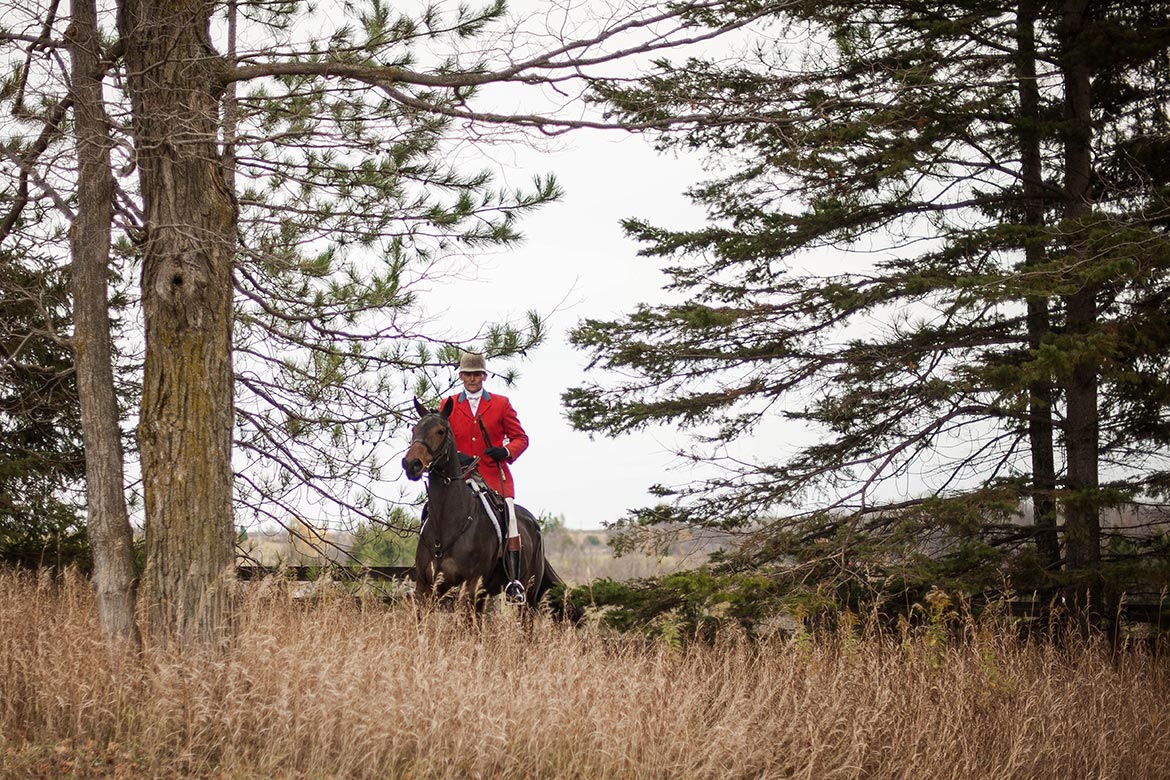
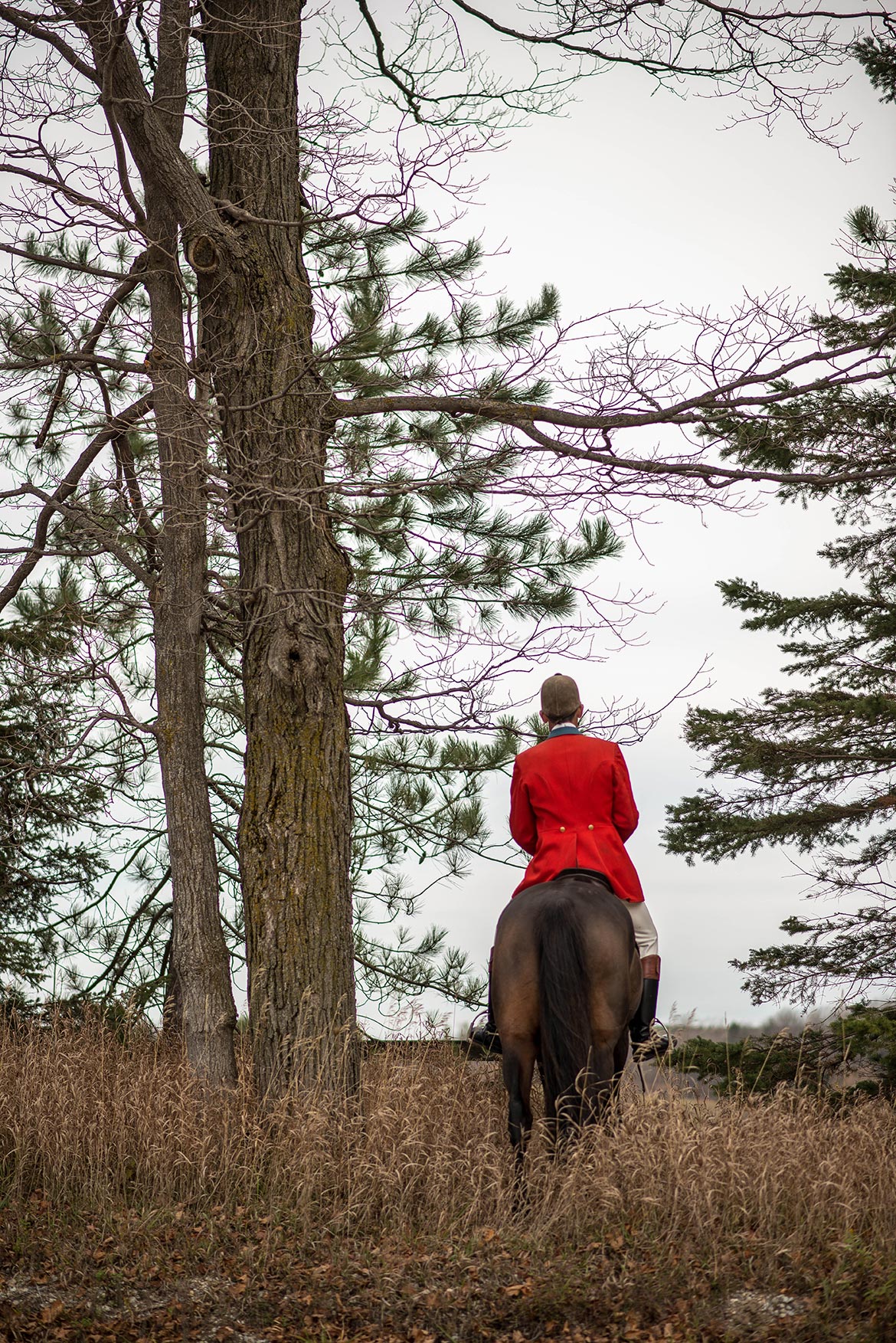
Why would a group of very sane, very intelligent individuals choose to go galloping through field and forest following a pack of hounds? Well according to Christine Gracey of the Eglington-Caledon Hounds there are a variety of reasons, from the social aspect, to the challenges it presents as a rider. “This is a non-competitive way to enjoy yourself on horseback” Christine says, “it can still be as much of a challenge as each individual wants… We ride with like-minded people who want to enjoy themselves, enjoy the rural beauty of Southern Ontario.” Others come to ride with the hounds she says. “It’s pretty amazing to watch over 40 hounds at liberty working hard, and yet very obviously listening and obeying the Hunstman through his use of voice and horn. They are doing the job they have been bred to do for hundreds of years.”
The ‘Hunt’ in its traditional, more formal form began as far back as 1668 in Buckinghamshire England. The earliest North American hunt was established in Montreal in 1826, followed by Virginia in 1840.
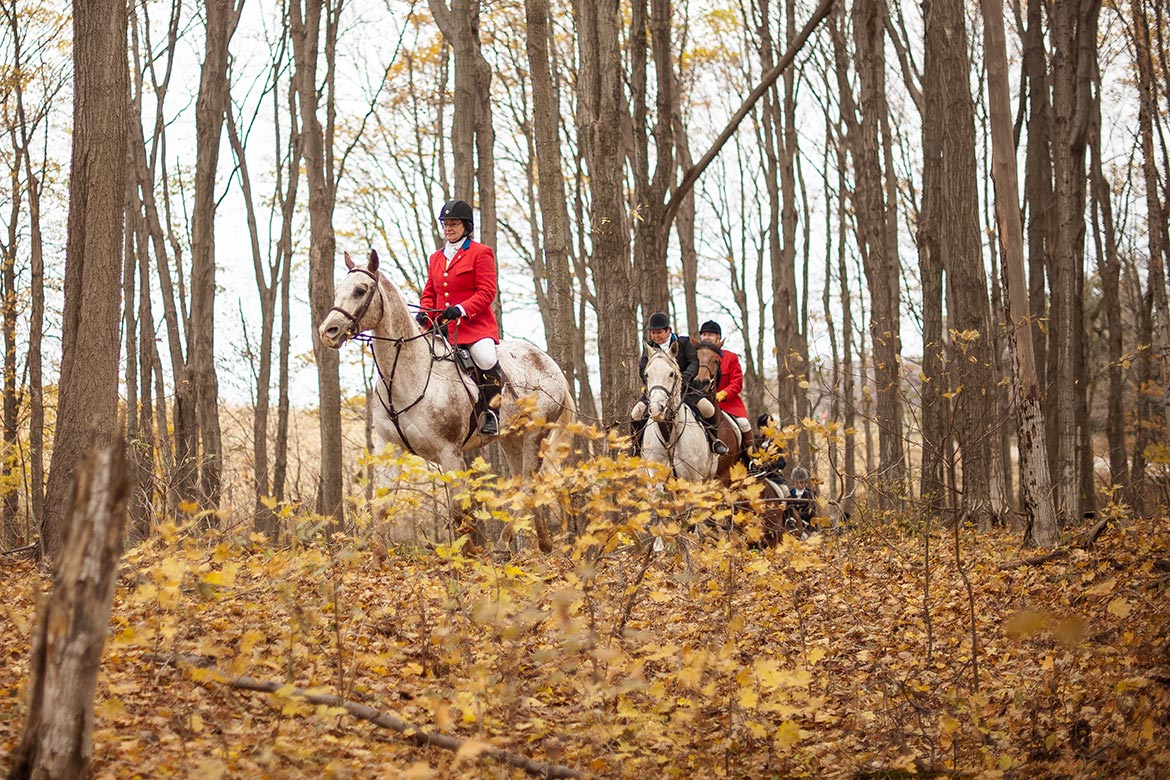
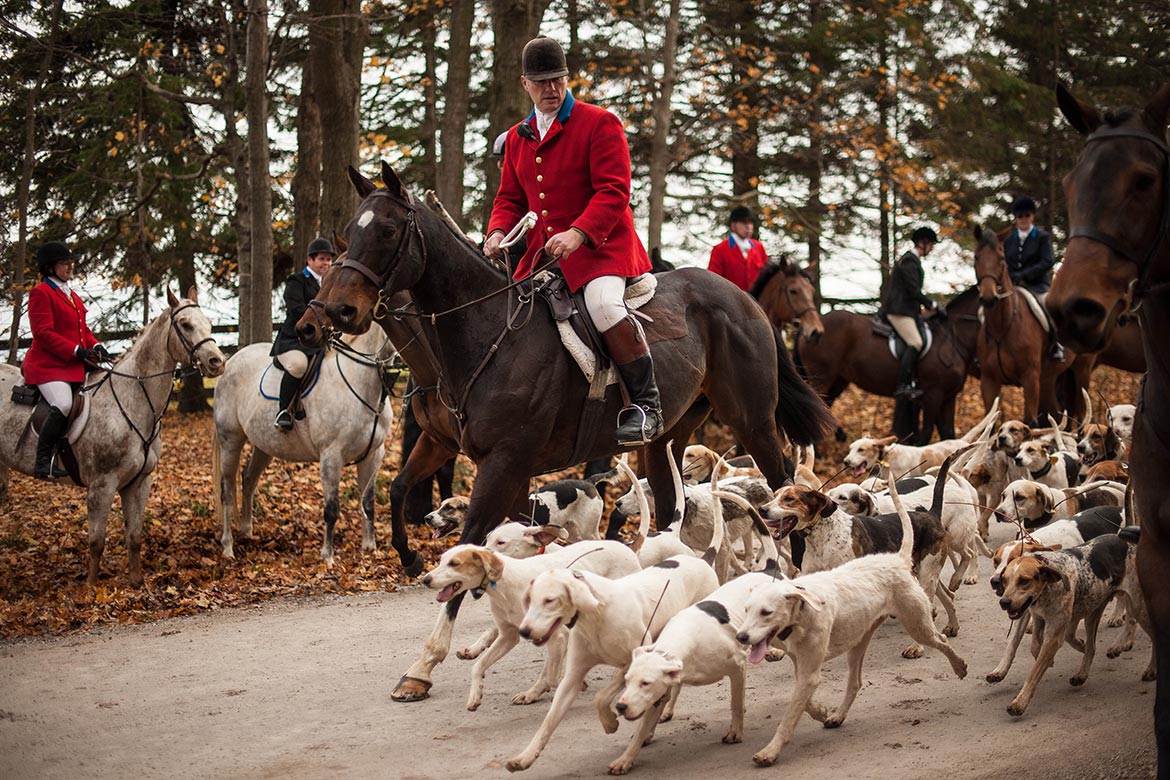
The traditional Fox Hunt itself, one where a Fox is tracked, run down and eventually killed by the hounds, was outlawed in the United Kingdom in 2004. I was a young assistant teacher at the time in the affluent South West county of Devon, a place where old traditions have stood the tests of time. Even to a much younger less aware self, the controversy and pushback against the outlawing of the hunt was palpable. These traditions run deep.
The rides and hunts in Caledon take on many forms and have a variety of goals, but for the hunt itself Christine explains that “(R)iding to hounds in a formal hunt has a different goal… We want to see hounds work well for the Huntsman and do their job. We want to go for an exhilarating run, following the Huntsman and the hounds, and hopefully get to view a coyote on the run. We enjoy seeing all kinds of wildlife and often have amazing stories to tell at the end of the day. A deer jumping out right in front of us, totally ignored by the hounds, a flock of geese rising from a misty pond surrounded by the beautiful autumn colour, the ride on a lovely trail through a beautiful sugar bush with hounds working on either side of us.”
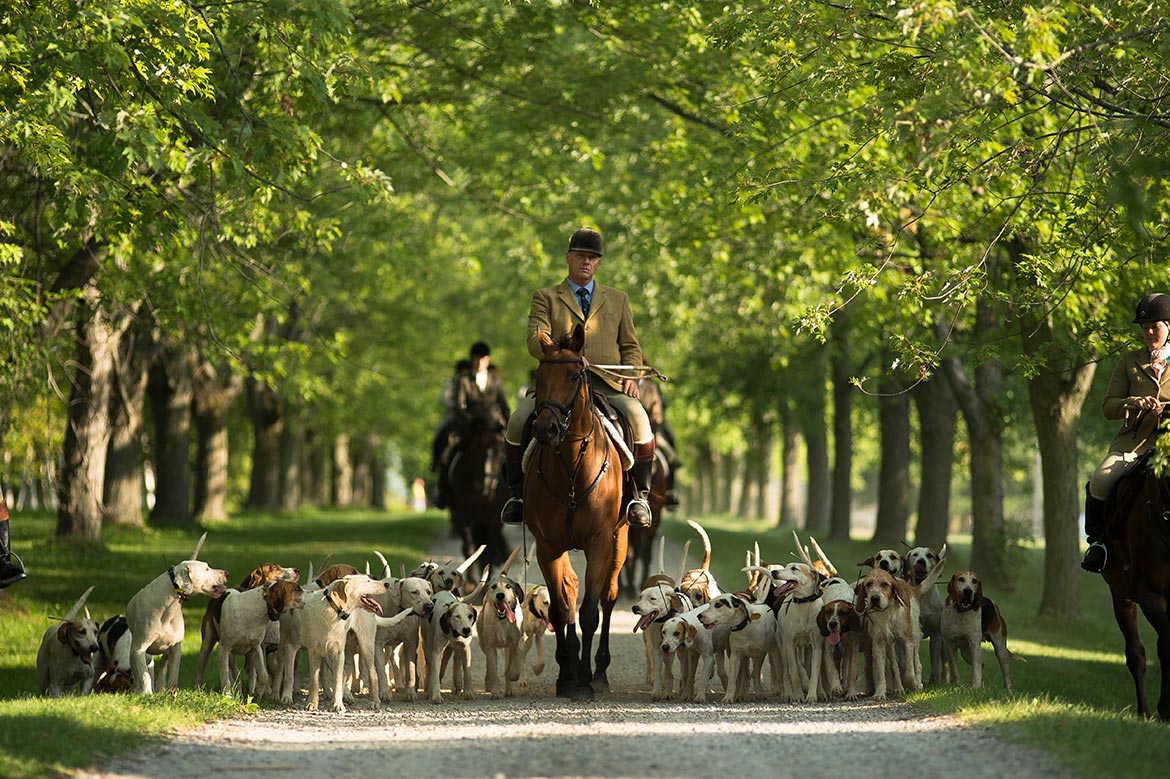
Hunting in North America takes on a different approach than the traditional hunt in England. In Lt. Col. Dennis J. Fosters book, Intro to Foxhunting he explains that, “(T)hrough the years, North American foxhunting has developed its own distinct flavor that is noticeably different from British foxhunting. The most obvious difference is that in North America the emphasis is on the chase rather than the kill. In addition, a large number of hunts chase coyotes, rather than the fox.”
According to Lynn Doyle, a longtime rider with the Eglinton-Caledon Hounds, now retired. One of the many benefits of the hunt is that it assists farmers in dealing with coyotes. “In I don’t know how many years we only ever caught two coyotes, and both were lame. We aren’t out to kill, it’s all about the chase,” she says. “The hunt will scare the coyotes off the farmers fields and property and push them back into the forest,” Lynn explains. Christine echoes that sentiment, saying that “(T)here are very few fox around now, their territories have been mostly taken over by coyote. The coyotes are a real problem for farmers, and for all people with pets who live in the rural areas.”
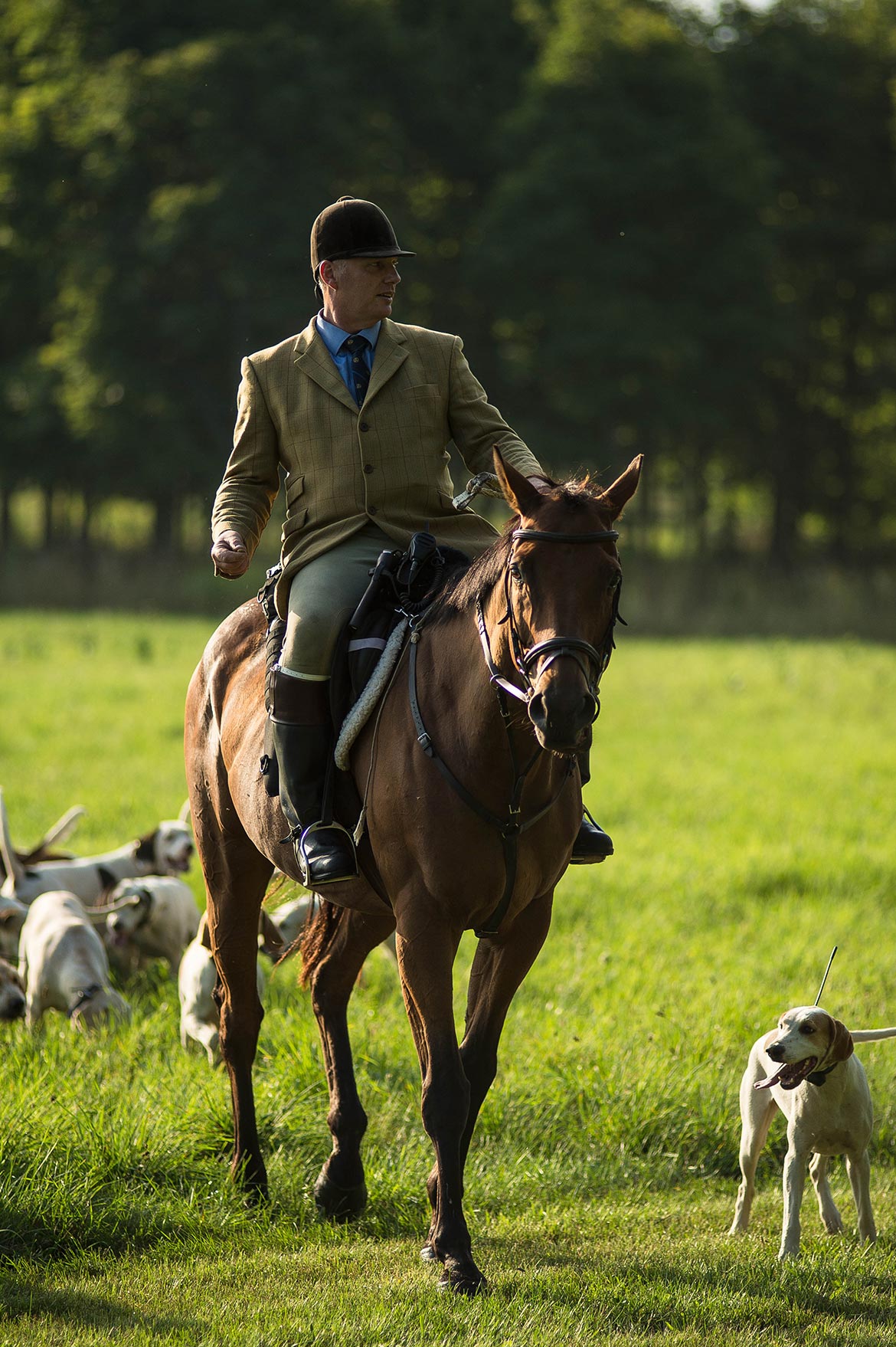
Once again I am hustling after the hunt as it hurtles down the road and veers off sharply into the bush, the dogs searching for the scent, the huntsmen encouraging them on. The long line of riders begins to stretch and meander its way through the brush. Flashes of scarlet, white and kaki move through the underbrush.
The crashing of brush, trees and forest is all I can hear as the hunt thrashes its way into the thick swamp. They have turned off the road and I can go no further. The last of the horses navigate the thickets of roadside bush before diving into the trail made by the hounds and huntsmen. With a cheerful look back and wave, the final rider, their riding greatcoat dark and damp from the rain, disappears like a fading dream into the red-orange leaves.
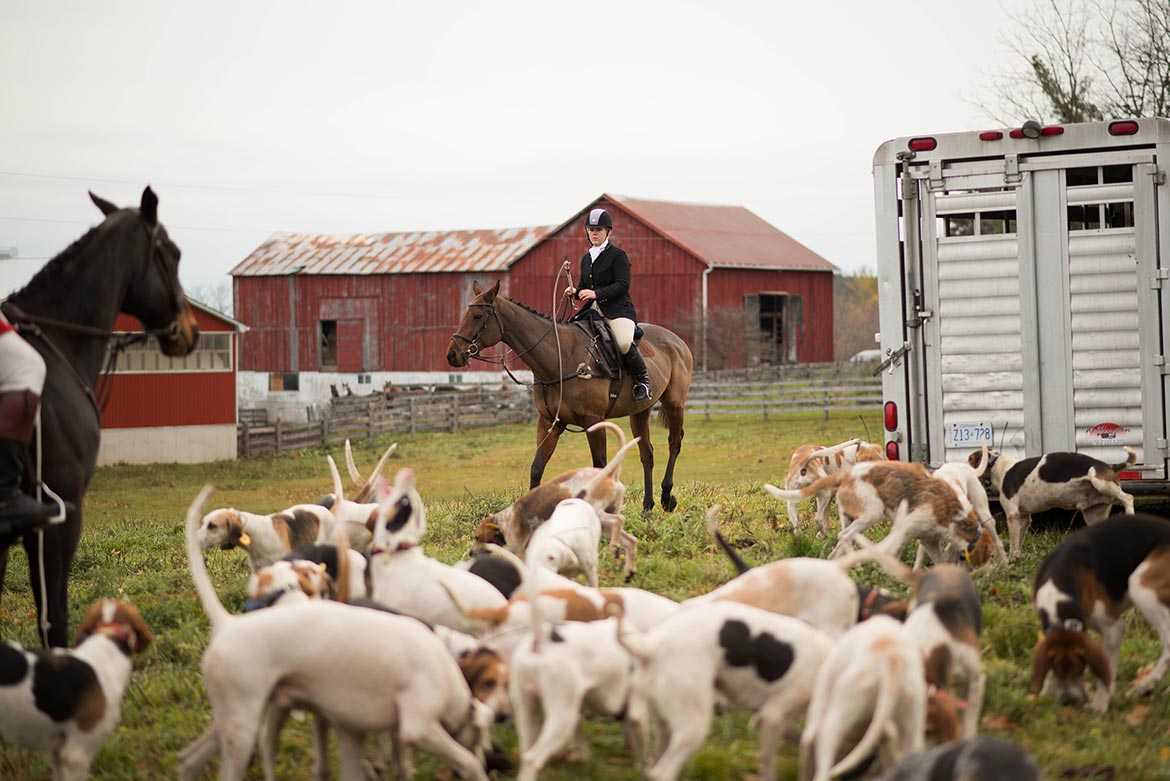
I stand there sopping wet, in the quiet made all the louder by the absence of horses and crashing brush, and reflect on the unique traditions and history kept alive by this tight knit group of equestrian enthusiasts and expert riders. I have long given up on trying to understand the why of the whole thing, and instead embrace the why not? The oddity, the whimsy, the history, the tradition; the world needs more of it so why not add a little here in the Headwaters.
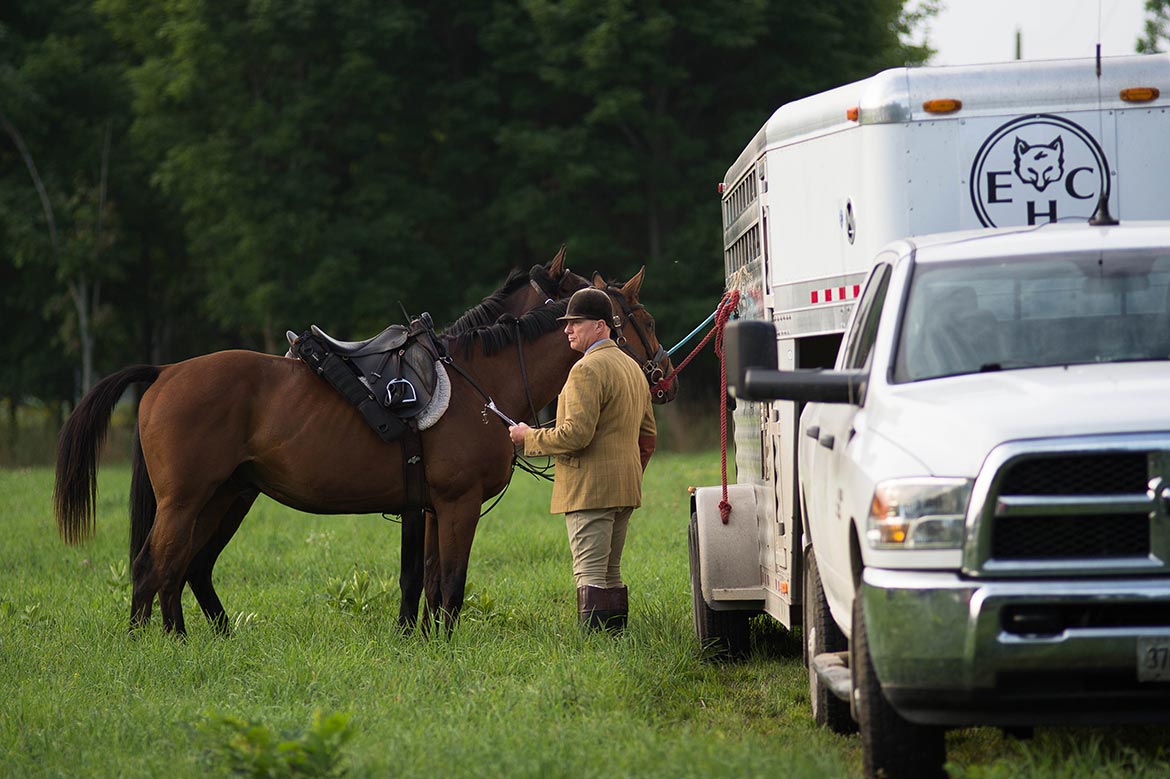
For more information and contact details on the Elginton-Caledon Hounds their website has everything you may need.
Make your next trip the best one.
Departful is a full service travel agency creating truly exceptional travel experiences that are 100% personalized to you. Wherever you’re going, whatever your interests, we help you plan the perfect trip.
James MacDonald
James MacDonald is a Canadian photographer, photojournalist, cinematographer and multimedia producer who has been bouncing around Asia, the Caribbean, the South Pacific and the Americas. James first picked up a camera in 2004 following high school, as he traveled and worked his way through Europe. While completing university and working more and more behind a camera, he soon realized that a history and anthropology degree could only hold his interest for so long. Following a year working as the photo and graphics editor for the University of Guelph's newspaper the Ontarion, an internship with Canadian Geographic Magazine in Ottawa, and then an internship with The StarPhoenix in Saskatoon, he moved back to Toronto to begin freelancing full time, and has been lucky enough to be making pictures since. James moved to Asia in the fall of 2013 to continue freelancing, as well as to work on and develop long term regional stories and projects. He is currently based in Chiang Mai, Thailand.


